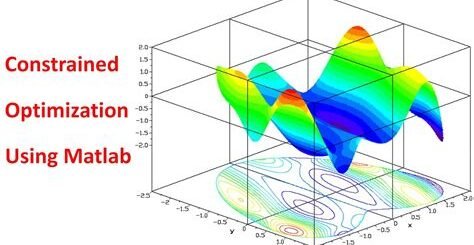Using Machine Learning in Matlab
Are you interested in delving into the world of machine learning using Matlab? Whether you’re a beginner or a seasoned coder, this powerful tool can bring your data to life and provide valuable insights. In this blog post, we will explore the various aspects of utilizing machine learning in Matlab, including preprocessing data, building classification models, evaluating performance, and optimizing models.
The introduction will provide a solid foundation for those who may be new to the concept of machine learning in Matlab, while also offering advanced tips and techniques for those looking to enhance their existing knowledge. By the end of this post, you’ll have a strong understanding of how to leverage the capabilities of Matlab to harness the power of machine learning for your own projects. So let’s dive in and discover the endless possibilities of using machine learning in Matlab.
Introduction to Machine Learning in Matlab
Machine learning is a powerful field of study that allows computers to learn from data and make predictions or decisions based on that data. Matlab, a popular programming language and environment for technical computing, provides a range of tools and functions for machine learning tasks. In this blog post, we will explore the basics of machine learning in Matlab, including data preprocessing, model building, performance evaluation, and model optimization.
One of the key aspects of machine learning is the preprocessing of data. This involves cleaning, transforming, and organizing the data to ensure that it is suitable for training a machine learning model. In Matlab, there are various functions and techniques available for data preprocessing, such as data normalization, feature selection, and handling missing values.
Once the data is preprocessed, the next step is to build a machine learning model. In Matlab, you can use built-in functions and algorithms to create classification, regression, clustering, and other types of machine learning models. These models are trained on the preprocessed data to learn patterns and make predictions.
After building a model, it is important to evaluate its performance to ensure that it is making accurate predictions. In Matlab, you can use metrics such as accuracy, precision, recall, and F1 score to assess the performance of a machine learning model. Additionally, you can visualize the results using plots and graphs to gain insights into the model’s behavior.
Preprocessing Data for Machine Learning in Matlab
When working with data for machine learning in Matlab, it is essential to preprocess the data in order to ensure the best performance of the models. Preprocessing involves several steps, including handling missing values, scaling features, and encoding categorical variables.
One important step in preprocessing data for machine learning in Matlab is handling missing values. This can be done by either removing the rows with missing values or by imputing the missing values with the mean, median, or mode of the column.
Another crucial step is scaling features. This is essential when the features have different units or scales. Scaling the features can be done using methods such as min-max scaling, standardization, or normalization.
Encoding categorical variables is also a key part of preprocessing data. Matlab provides various functions for encoding categorical variables, such as one-hot encoding or label encoding, depending on the nature of the variables.
Building a Classification Model in Matlab
When building a classification model in Matlab, it is important to first understand the data that will be used for training the model. This involves preprocessing the data to ensure that it is clean and in the right format for input into the model. This may include removing any missing values, encoding categorical variables, and scaling the features to a similar range. Once the data is preprocessed, the next step is to choose a suitable classification algorithm for building the model.
There are several classification algorithms that can be used in Matlab, such as decision trees, support vector machines, and k-nearest neighbors. Each algorithm has its strengths and weaknesses, so it is important to experiment with different algorithms to see which one performs the best for the specific dataset. After selecting the algorithm, the next step is to train the model using the preprocessed data.
Training a classification model in Matlab involves using a portion of the preprocessed data to teach the model how to classify different instances. This is typically done by splitting the data into a training set and a testing set, where the training set is used to teach the model and the testing set is used to evaluate its performance. Once the model has been trained, it can then be used to make predictions on new, unseen data.
It is important to evaluate the performance of the classification model to ensure that it is accurately classifying instances. This can be done using metrics such as precision, recall, and F1 score, which provide insight into how well the model is performing. Additionally, techniques such as cross-validation can be used to assess the model’s generalization performance and ensure that it is not overfitting the training data.
Evaluating Model Performance in Matlab
When it comes to evaluating model performance in Matlab, there are several key metrics that data scientists and machine learning engineers use to assess the effectiveness of their models. One of the most commonly used metrics is accuracy, which measures the proportion of correctly classified instances out of the total instances. While accuracy is a good starting point, it’s important to consider other metrics such as precision, recall, and F1 score to get a more comprehensive view of the model’s performance.
Another important aspect of evaluating model performance is confusion matrices, which provide a breakdown of the model’s predictions compared to the actual values. This helps to identify where the model is making errors and which classes are being misclassified. By analyzing the confusion matrix, data scientists can gain insights into the strengths and weaknesses of the model, and make adjustments as needed.
Besides traditional performance metrics, it’s also crucial to consider the area under the receiver operating characteristic curve (AUC-ROC) and precision-recall curve. These metrics are especially useful for evaluating models in classification tasks, as they provide a visual representation of the model’s ability to distinguish between classes and its trade-off between precision and recall.
Ultimately, the process of evaluating model performance in Matlab involves a holistic approach that takes into account various metrics and techniques to ensure that the model is effective and reliable for real-world applications.
Optimizing Machine Learning Models in Matlab
When it comes to machine learning in Matlab, optimizing your models is essential for achieving the best performance. Optimizing your models involves fine-tuning various parameters and hyperparameters to improve the accuracy and efficiency of your algorithms.
One important step in optimizing machine learning models is to optimize the hyperparameters of your algorithms. This involves tuning the parameters that are not learned by the model itself, such as the learning rate in a neural network or the number of clusters in a K-means clustering algorithm. By experimenting with different values for these hyperparameters, you can find the combination that produces the best results for your specific dataset.
Another key aspect of optimizing machine learning models is to optimize the feature selection. Feature selection is the process of choosing the most relevant features from your dataset to include in your model. This can help reduce overfitting and improve the generalization of your model. In Matlab, you can use built-in functions and tools to perform feature selection and identify the most influential features for your machine learning tasks.
Furthermore, it is important to optimize the performance metrics of your models. This involves choosing the right evaluation metrics to assess the performance of your algorithms, such as accuracy, precision, recall, and F1 score. By understanding the specific requirements of your problem domain, you can select the most appropriate performance metrics for evaluating the effectiveness of your machine learning models.


